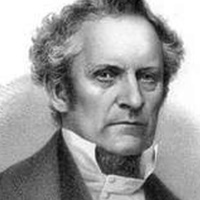Julius Plücker
Julius Plücker was a German mathematician and physicist. He made fundamental contributions to the field of analytical geometry and was a pioneer in the investigations of cathode rays that eventually led to the discovery of the electron. He also vastly extended the study of Lamé curves.
Julius Plücker attended the universities in Heidelberg, Bonn, Berlin, and Paris. In 1829, after four years as an unsalaried lecturer, he became a professor at the University of Bonn, where he wrote Analytisch-geometrische Entwicklungen, “The Development of Analytic Geometry”). This work introduced abridged notation and exploited the possibility of taking lines rather than points as the fundamental geometric elements. Through this idea, he developed the principle of duality in projective geometry, which states that if a theorem is true, then its dual theorem and their corresponding statements—is also true. In 1834 Plücker became a professor of mathematics at the University of Halle before returning to Bonn two years later. In Theorie der algebraischen Curven , he presented the famous “Plücker formulas” relating the number of singularities on algebraic curves to those of their dual curves. In 1847 he began research on the behaviour of crystals in a magnetic field, establishing results central to a deeper knowledge of magnetic phenomena. At first alone and later with the German physicist Johann W. Hittorf, Plücker investigated the magnetic deflection of cathode rays. Together they made many important discoveries in spectroscopy, anticipating the German chemist Robert Bunsen and the German physicist Gustav R. Kirchhoff, who later announced that spectral lines were characteristic for each chemical substance. In 1862 Plücker pointed out that the same element may exhibit different spectra at different temperatures. Plücker was the first to identify the three lines of the hydrogen spectrum, which a few months after his death were recognized in the spectrum of solar radiation.

Julius Plücker
Date of Birth: 16 Jun 1801
Birth Place: Elberfeld, Wuppertal, Germany
Proffession: mathematician and physicist
Nationality: 22 May 1868, Bonn, Germany
Death: 22 May 1868, Bonn, Germany


